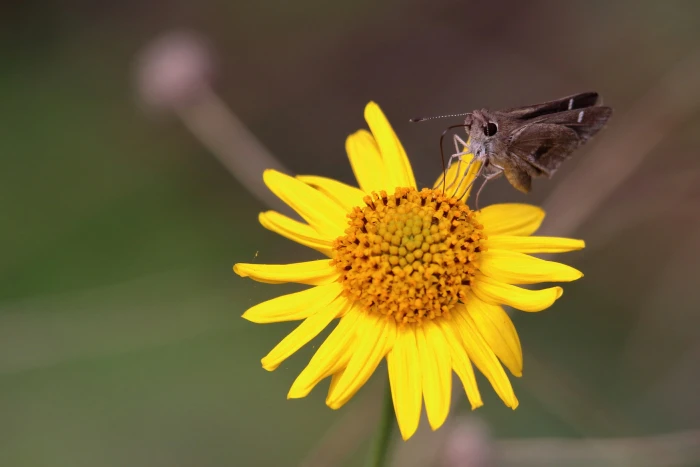Skeletonleaf Goldeneye
(Sidneya tenuifolia)
Skeletonleaf Goldeneye (Sidneya tenuifolia)
/
/

Lauren McLaurin
CC BY 4.0
Image By:
Lauren McLaurin
Recorded By:
Copyright:
CC BY 4.0
Copyright Notice:
Photo by: Lauren McLaurin | License Type: CC BY 4.0 | License URL: http://creativecommons.org/licenses/by/4.0/ | Rights Holder: Lauren McLaurin | Publisher: iNaturalist | Date Created: 2021-02-08T12:15:18-08:00 |



















































Estimated Native Range
Climate Requirements for Appleton, Wisconsin
| This Plant | Your Site | Plant Suitability for Your Location | ||
|---|---|---|---|---|
| • Precipitation | 7" - 40" | 31" | Your precipitation may be too high for this plant. | Too high |
| • High Temp. | 69°F - 104°F | 82°F | Your summer temperatures are normal for this plant. | Excellent |
| • Low Temp. | 15°F - 54°F | 7°F | Your winter temperatures may be too cold for this plant | Too cold |
This plant may not grow well at your location - your precipitation is too high.
Summary
Sidneya tenuifolia, commonly known as Skeletonleaf Goldeneye, is an evergreen subshrub or shrub native to the arid and semi-arid regions, including desert scrub, chaparral, and riparian zones in the Southwestern USA and Northern Mexico. It typically grows to a height and width of 2-4 feet (0.6-1.2 meters). The plant is characterized by its delicate, finely textured foliage and its ability to produce vibrant yellow flowers throughout the year, which are particularly showy and attract pollinators.
Skeletonleaf Goldeneye is valued for its drought tolerance and year-round flowering, making it a suitable choice for xeriscaping, rock gardens, and naturalistic plantings in arid climates. It thrives in full sun to part shade and prefers well-drained soils. While it is low maintenance and requires minimal water once established, it is important to avoid overwatering to prevent root rot. This plant is not commonly affected by diseases or pests, but it can be sensitive to overwatering and poor drainage.CC BY-SA 4.0
Skeletonleaf Goldeneye is valued for its drought tolerance and year-round flowering, making it a suitable choice for xeriscaping, rock gardens, and naturalistic plantings in arid climates. It thrives in full sun to part shade and prefers well-drained soils. While it is low maintenance and requires minimal water once established, it is important to avoid overwatering to prevent root rot. This plant is not commonly affected by diseases or pests, but it can be sensitive to overwatering and poor drainage.CC BY-SA 4.0
Plant Description
- Plant Type: Subshrub, Shrub
- Height: 2-4 feet
- Width: 2-4 feet
- Growth Rate: Moderate
- Flower Color: Yellow
- Flowering Season: Winter, Spring, Summer, Fall
- Leaf Retention: Evergreen
Growth Requirements
- Sun: Full Sun, Part Shade
- Water: Low
- Drainage: Medium
Common Uses
Deer Resistant, Drought Tolerant, Low Maintenance, Rock Garden
Natural Habitat
Desert scrub, chaparral, and riparian zones in the Southwestern USA and Northern Mexico
Other Names
Common Names: Resinbush
Scientific Names: Viguiera stenoloba, Sidneya tenuifolia, Gymnolomia tenuifolia, Viguiera stenoloba subsp. chihuahuensis, Heliomeris tenuifolia, Heliomeris simplex
GBIF Accepted Name: Sidneya tenuifolia (A.Gray) E.E.Schill. & Panero